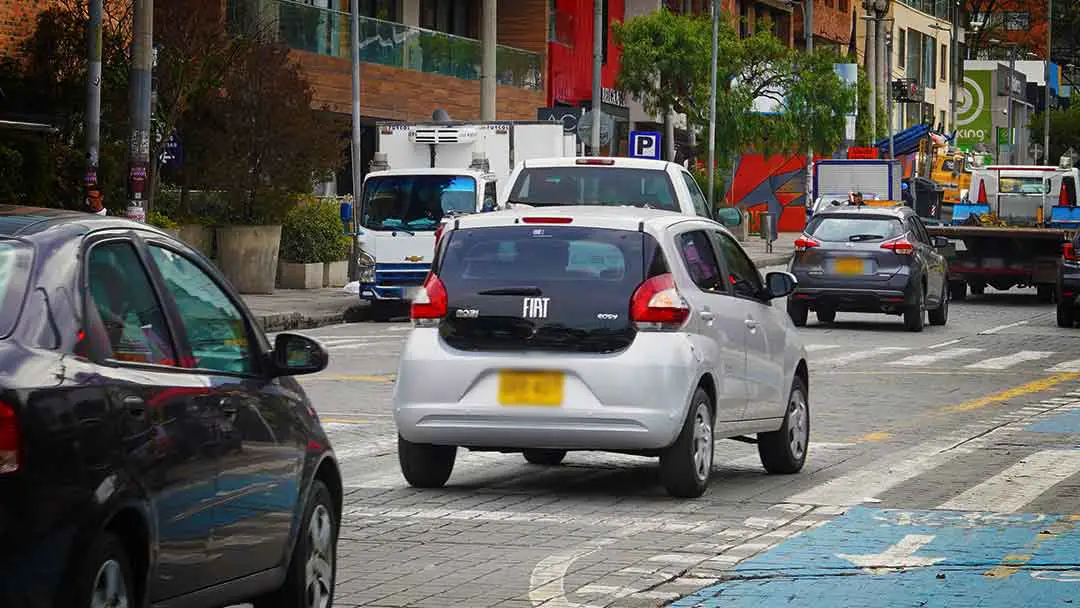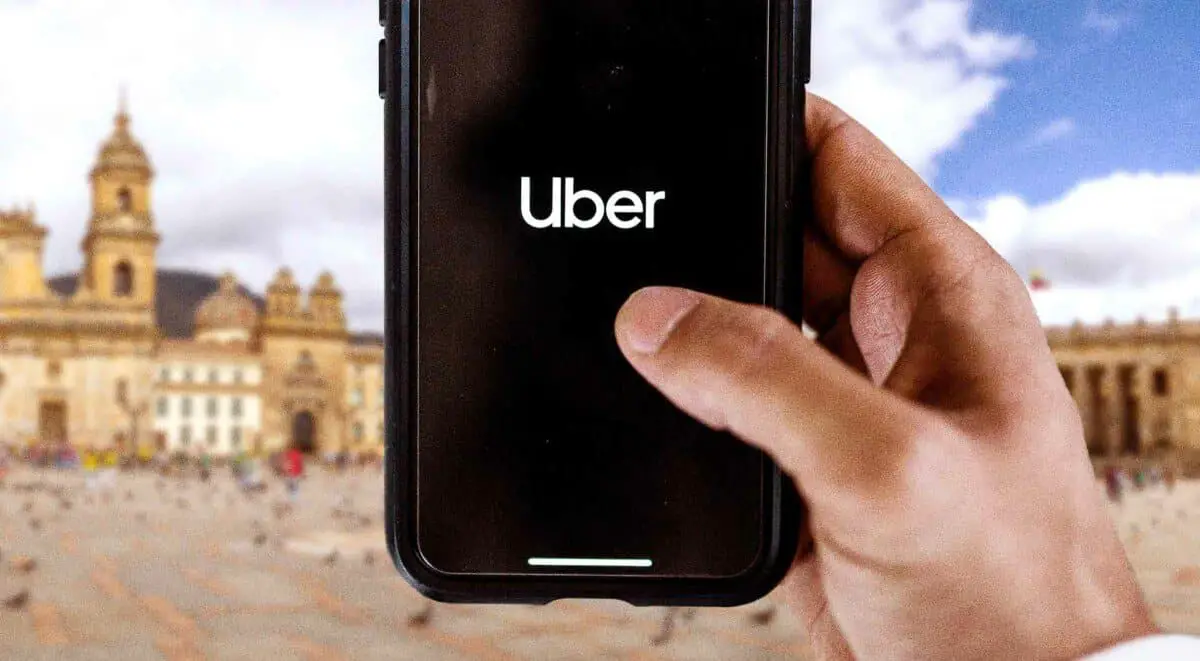Is It Safe To Drive In Colombia?

As an Amazon Associate we earn from qualifying purchases made on our website. If you make a purchase through links from this website, we may get a small share of the sale from Amazon and other similar affiliate programs. You can read our complete legal information for more details. By using this site, you agree the information contained here is for informational purposes only. For specific medical questions, consult your doctor. NO information on this site should be used to diagnose, treat, prevent or cure any disease or condition.
Have you got ideas for deleting that Uber app? or maybe you want to rent a car and take in the marvelous views of the Colombian countryside on a long road trip?
Driving in Colombia has its own rules and customs, making it a challenging country to drive in. Is it safe? Well, yes and no, as I explain further in this article.
I’m a US-born & raised Colombian-American who’s lived here in Medellin for the last five years. I will give you the REAL DEAL about the often frustrating but very rewarding driving experience in Colombia.
So, is it safe to drive in Colombia?
If there’s anything I’ve learned about Colombia from living here for the past five years, it’s that nothing is ever black or white here.
Colombia is awash in a multitude of grey tones.
You will hardly ever get a straight “yes” or “no” answer. As is the case here, the short answer is, well, “yes and no.“
Colombia is a large and lovely country. One that has become a prime travel and tourism destination, whether you plan on visiting on holiday or have thoughts on becoming one of the many ex-pats or digital nomads that have chosen to make Colombia their home way from home.
You’d be right to have ideas of taking on a long road trip and taking in the scenery of incredible and lush landscapes on winding, tranquil mountain roads.
Or you may want to ditch Uber and get around the city alone. Whatever the case, you want to drive.
And I will do my best to get you all the information you need to know to get behind the wheel in Colombia.

Legally Driving in Colombia
Any foreigner who enters Colombia on a tourist visa can legally drive in Colombia if they have a valid driver’s license from their home country. This is fine for up to 3 months with a tourist visa/stamp.
Per expat.com, “When driving as a tourist, always carry a copy of your passport and the page with your entry stamp. This will prove you’re a tourist, therefore, are not required to have a local driving license.”
Ex-pats or digital nomads who choose to live in Colombia for an extended period will need to go ahead and get a local driver’s license.
It’s simple of a process, but it is time-consuming, and of course, that comes with a cost.
A local driving school will expedite the process for you, handling all the paperwork for a small fee.
For up-to-date info, you will need to check out the Colombian Ministry of Transportation.
Random trivia question and answer, does it snow in Colombia? Yes, here is where and what to expect.
Renting a Car in Colombia
Car rentals are not exactly common or popular in Colombia, but they can be done.
Major cities like Bogota or Medellin will have the availability of the major well-known rental companies like Hertz or Avis, usually at the airport.
The documentation you will need is not any different than anywhere else:
- Passport or Identification
- Credit card
- Minimum age: 23 years of age
- Valid Driver Licence

The Driving Part
Now that you’ve got your proper documentation in order and acquired the vehicle of your choice, you’re going to wanna drive!
Get in the car and go! Hold on a second; buckle up; you’ll want to know a few things.
The traffic
It’s horrendous, especially in the larger cities. Rush hour is insane, but Colombians are early risers, so expect traffic to get nasty as early as 6 am!
In fact, if you are in Medellin, it may make sense just to take The Metro.
The drivers
I’ve often commented to the foreigners I meet that the strangest thing about Colombian people is the extreme dichotomy between who they are normally and who they become when they get behind the wheel.
Drivers in Colombia are very petty and aggressive. And those are just the standard “civilian” drivers, never mind the taxis or buses!
Those guys know no laws or etiquette.
Expect Colombian drivers to fight for every inch of the road, cut you off, throw their vehicles at you, and try to intimidate you.
…and the motorcycles! There are just too many! It’s like a swarm of hornets buzzing all around without care for rules or consideration for anyone else.
Stop signs, traffic signals, and lanes
These are all but mere suggestions in Colombia. Most seem to ignore them altogether. What about turn signals? What are those?!
You may also find the signalizations confusing, like all the different types of Colombian dances.
Most are out of place or hard to see. Stop signs, for example, are often different from the bright red hexagonal sign we are accustomed to but instead painted on the floor, barely visible.
Street names are just as hard to find if there are any at all. They’re not on posts on the corners but usually on small plaques affixed to the walls of the buildings.
Speed trap cameras
With all that being said, you do have to keep an eye out for the speed traps. Major cities like Medellin and Bogota are littered with speed cameras that not only will catch you going over the speed limit but can also issue tickets for registration or inspection violations.
Pico y Placa
The cities now have also implemented a measure called “Pico & Placa” in an effort to reduce the number of vehicles on the road; every day is assigned a number, and if your plate ends in that number, you’re not allowed to be on the road that day.
The cameras catch this, and you will be fined.
Language barrier
Driving in Colombia without knowing Spanish is a whole other level of hard.
As a fluent Spanish speaker, I can only imagine this added layer of difficulty.
Perhaps make some flashcards of all the driving-related words and get those words memorized before you hit the streets.
I go into depth on the language barrier and other pros and cons of living in Colombia here.

Finding your way
Any foreigner in an unfamiliar land would expect to use GPS to get around, and you would be right.
That is your best bet here in Colombia unless you’re with my uncle, who absolutely hates those things!
Asking him, or any other Colombian, for directions is an adventure at best.
Every location has a nickname, and odd reference points and streets aren’t called by their numbers; it’s a hot mess!
But be wary, traveler, as the GPS gods have mysterious ways.
Very often, your trusty Waze or Google Maps can send you on a path through some unsavory places, let’s say.
It may be the quickest way there, but not necessarily the safest.
Especially if you’re traveling outside the cities, out on the open road, it would be wise to stay on the main paths.
Be careful with shortcuts that may take you thru unpaved roads, crazy steep climbs, or rough neighborhoods.

But is it SAFE?
That’s what you came here to find out, right? For the most part, yes. Driving comes with it an inherent danger. As good a driver as you may be, you can’t know about those around you, so there is that.
Robberies
As far as crime is concerned, you should know that it has become more common for muggings to occur at traffic stops or in traffic jams.
Usually, two guys on a motorcycle will roll up beside you, and tap on your window with a gun, demanding you hand over your valuables, mostly your cell phone.
This is a problem.
And many places have instituted laws banning a male 2nd rider on a motorcycle.
While that modality of crime has been rising recently, it’s not something you should be fearful of every time you get in a car.
I’ve been here for over five years now, and I’ve yet even to see it happen, much less be mugged myself in any way!
Any major city has an element of crime, but with some care and common sense, you should be ok.
Unchartered Territory
One other thing I really need to mention is that outside of major cities and in areas that are more rural, the Colombian government doesn’t always have control.
What I mean is that socialist paramilitaries (like FARC), guerilla fighters, and narco-traffickers control most of those regions. When traveling via car in those areas, you are at risk.
They have been known to set up fake checkpoints to complete robberies and even kidnappings.
Tread cautiously when traveling outside of cities and rural areas! Maybe reconsider visiting these places altogether.
While on the topic of danger, please be careful of the water you drink in Colombia. This article is about tap water in Cartagena, but it can apply to Bogota, Medellin, and some of the larger well-developed cities.
Conclusion
Driving in Colombia is close to a Wild West situation and can be challenging when compared to cities in the US. However, like anything, you will get accustomed to this way of driving.
Perhaps renting a car for a week is the better idea before shelling out major money for a long-term rental or purchase.
One thing is for certain, driving in Colombia is not the same as driving in the USA. Therefore you will need to take more precautions, drive defensively and know that rural areas are not always safe.
Is Colombia the right choice for you to visit or even live in? I help potential ex-pats and travelers with this question in 11 Pros & Cons for Expats Living in Colombia.



